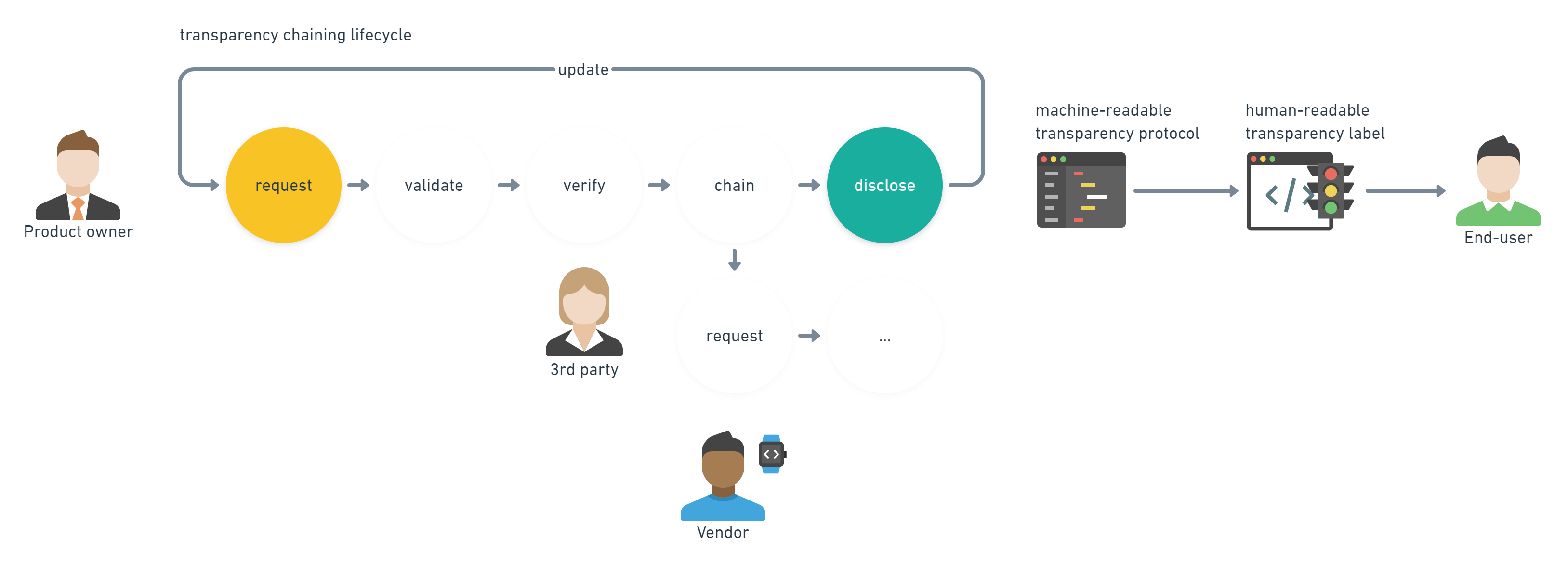Open Ethics Transparency Protocol
Introduction
The Open Ethics Transparency Protocol (OETP or Protocol) describes the creation and exchange of voluntary ethics Disclosures for products that involve Automated Decision-Making (ADM), including AI-powered services, Robotic process automation (RPA) tools, and robots. It is brought as a solution to increase the transparency of how digital products with full or partial automation are built and deployed. This document provides details on how disclosures for data collection and data processing practice are formed, stored, validated, and exchanged in a standardized and open format.
What is Self-disclosure?
Digital products need to be transparent about how they collect, store, and process information for and about users. This becomes paramount when software product makes predictions or is integrated into the automated decision-making processes. Self-disclosure in the context of digital products refers to the practice of owners and deployers voluntarily sharing information about how their products are built and about how they are expected to behave while interacting with end-users or downstream software agents. Self-disclosure is essential as it helps build trust and tailor user experiences. Open Ethics designed the web form to help product owners disclose information about key pillars of their product including training data, algorithms, and the decision space. The tool generates a machine-readable JSON file, and the product owner receives the automatically generated HTML code with the visual representation of the disclosure (OEL), which can be pasted onto their website with zero effort.

The protocol supports ethical disclosure of ADMs and provides facilities for:
- Informed consumer choices : End-users able to make informed choices based on their own ethical preferences and the product’s disclosure.
- Industrial scale monitoring : Discovery of best and worst practices within market verticals, technology stacks, and product value offerings.
- Legally-agnostic guidelines : Suggestions for developers and product-owners, formulated in factual language, which are legally-agnostic and could be easily transformed into product requirements and safeguards.
- Iterative improvement : Digital products, specifically, the ones powered by artificial intelligence could receive a nearly real-time feedback on how their performance and ethical posture could be improved to cover security, privacy, diversity, fairness, power-balance, non-discrimination, and other requirements.
- Labeling and certification : Mapping to existing and future regulatory initiatives and standards.
Glossary book is only visible on a larger screens. If you’re on mobile, you can still explore it here
The Open Ethics Transparency Protocol (OETP) is an application-level protocol for publishing and accessing ethical Disclosures of Products and their Components. The Protocol is based on HTTP exchange of information about the ethical “postures”, provided in an open and standardized format. The scope of the Protocol covers Disclosures for systems such as Software as a Service (SaaS) Applications, Software Applications, Software Components, Application Programming Interfaces (API), Automated Decision-Making (ADM) systems, and systems using Artificial Intelligence (AI). OETP aims to bring more transparent, predictable, and safe environments for the end-users. The OETP Disclosure Format is an extensible JSON-based format.
The Internet Draft of the protocol document is available on GitHub. The URI scheme is available in this repository URI scheme.
Preview of the Protocol documentation
